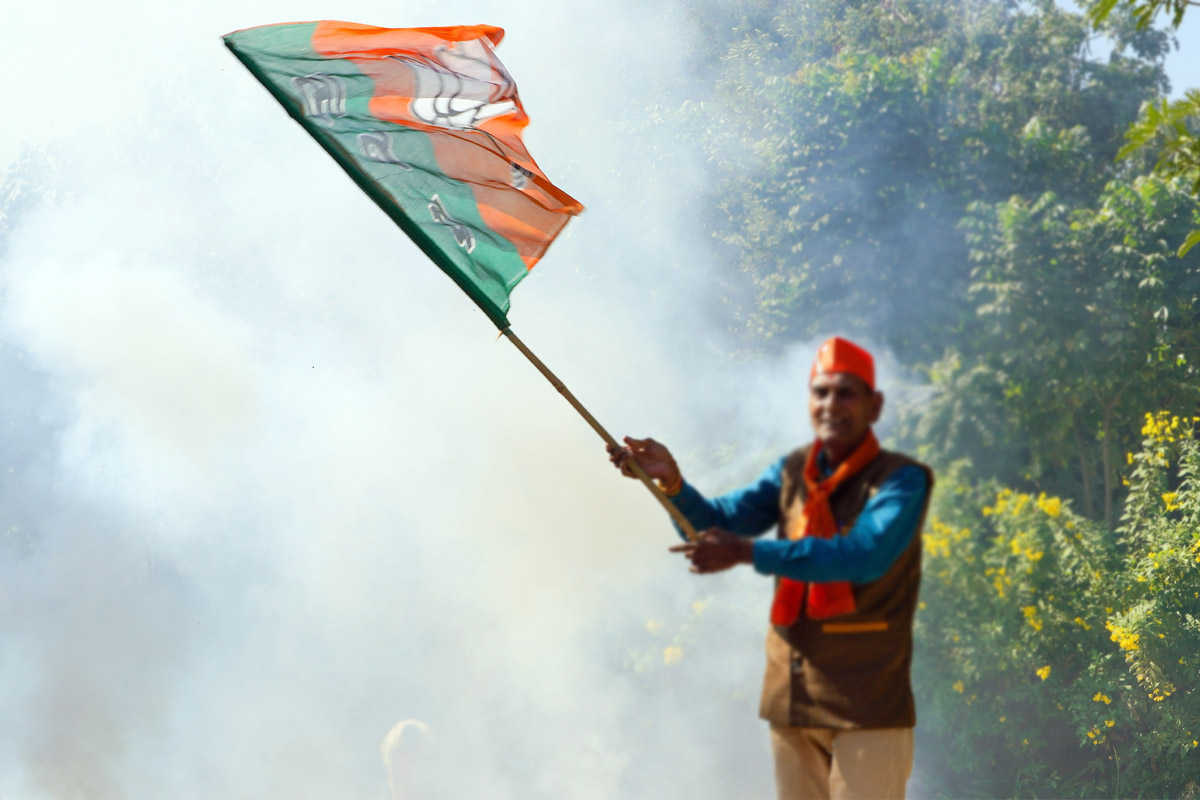‘No alliance with AAP in Delhi’
Delhi Pradesh Congress Committee (DPCC) chief Devender Yadav is counted as one of the prominent politicians in the national capital.
In the recent state assembly elections, the Bharatiya Janata Party (BJP) secured a resounding victory in Rajasthan, Madhya Pradesh, and Chhattisgarh, underlining the dominance of its political narrative.

File Photo: ANI
In the recent state assembly elections, the Bharatiya Janata Party (BJP) secured a resounding victory in Rajasthan, Madhya Pradesh, and Chhattisgarh, underlining the dominance of its political narrative. The party’s triumph seems rooted in a strategic blend of Hindutva politics, a distinctive model of poor-centric welfarism, and an aspirational vision for a ‘developing India’ driven by a hyper-nationalist wave. A closer examination of the vote shares reveals a critical shift, particularly among the Other Backward Classes (OBC) vote bank in the northern states, tilting decisively towards the BJP.
This poses a formidable challenge for opposition alliances, highlighting the imperative to unite OBC, Scheduled Caste (SC), and Scheduled Tribe (ST) voter bases for comprehensive victories. The southern states, in contrast, exhibit a different electoral calculus, with the OBC vote leaning towards the Congress. This divergence underscores the complexity of regional dynamics and the necessity for a nuanced understanding of local factors. The BJP’s success in the north is further underscored by its ‘poor-centric welfarism,’ a model that resonates where the proportion of the poor and low-income electorate is significantly higher. However, the same approach encounters resistance in southern states like Telangana, Tamil Nadu, Kerala, and Karnataka, where socio-cultural histories have fostered a unique approach to development.
The southern states, performing notably better across key development indices, seem less receptive to the BJP’s narrative, emphasising the need for adaptive, region-specific strategies. The linguistic and cultural limitations of the BJP become apparent in its struggle to gain traction in the south. The party’s aggressive Hindutva push, coupled with a policy favouring ethno-linguistic cohesion around Hindi-speaking dominance, faces significant resistance in states with diverse sub-regional populations. This suggests a critical lesson for the BJP ~ a one-size-fits-all approach is untenable in India’s diverse socio-political landscape. Political strategist Prashant Kishor’s insights on Indian electoral democracy highlight the importance of a bottom-up approach, where voters evaluate a complex interplay of social, economic, and political factors. For any party aspiring to bring about real change, understanding and addressing these multifaceted considerations are paramount.
Advertisement
The BJP’s decisive mandates in three states reveal clarity of voter intent on the ground. On the opposition front, the Congress grapples with a lack of coherent vision, particularly at the state and national levels. The emphasis on the Bharat Jodo Yatra and the charisma of the Gandhi family, while providing a sense of optimism, risks oversimplifying the complex tapestry of electoral dynamics.
The need for a more dynamic and responsive approach, drawing inspiration from historical success stories within the party, becomes apparent. As the political stage sets the tone for the 2024 Lok Sabha polls, the BJP’s pragmatic vision remains unchallenged in the Hindi heartland, largely due to the feeble opposition. The lesson for the opposition, especially the Congress, lies in acknowledging the evolving political landscape and devising a strategy that resonates with the diverse aspirations of the Indian electorate.
Advertisement